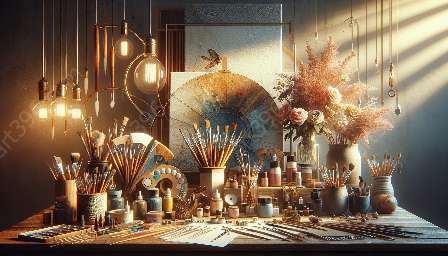When it comes to creating stunning drawings and illustrations, the choice of paper plays a crucial role. There are various types of paper specifically designed to meet the needs of different drawing and illustration techniques. To create beautiful art, it's important to understand the characteristics and uses of these papers, while also considering essential drawing and illustration supplies and art & craft supplies.
Types of Paper
Here are some of the most commonly used types of paper for drawing and illustration:
- Drawing Paper: This type of paper is versatile and smooth, making it suitable for both drawing and illustrating with a variety of mediums like pencils, charcoal, and pastels.
- Sketch Paper: Slightly thicker than regular drawing paper, sketch paper is excellent for quick sketches and preliminary drawings, often used by artists to capture initial ideas and concepts.
- Watercolor Paper: Designed to withstand water-based mediums, watercolor paper is textured and absorbent, making it ideal for creating vibrant watercolor illustrations.
- Marker Paper: Smoother and thicker than regular paper, marker paper is specifically designed for use with markers and is resistant to bleeding and feathering.
- Mixed Media Paper: As the name suggests, mixed media paper is suitable for various mediums, making it a versatile choice for artists who like to combine different techniques in their illustrations and drawings.
- Illustration Board: This heavyweight, rigid paper is often used for illustrations that require a sturdier surface, such as ink drawings and detailed illustrations.
Essential Drawing & Illustration Supplies
In addition to choosing the right paper, artists need essential supplies to bring their vision to life. Here are some must-have drawing and illustration supplies:
- Drawing Pencils: A range of graphite pencils in different hardness grades for creating varying tones and textures in drawings.
- Erasers: Essential for correcting mistakes and refining details in drawings and illustrations.
- Ink Pens: Used for creating precise lines and adding fine details to illustrations, especially on illustration boards and marker paper.
- Bristle Brushes: Essential for watercolor illustrations, providing control and versatility for creating different textures and effects.
Art & Craft Supplies
Lastly, incorporating art & craft supplies can add depth and dimension to drawings and illustrations, allowing artists to explore new techniques and styles. Some vital art & craft supplies include:
- Acrylic Paints: Used to add color and vibrancy to illustrations, whether as a standalone medium or in combination with other materials.
- Collage Materials: Offering a unique way to add texture and visual interest to illustrations, collage materials can inspire creativity and experimentation.
- Embellishments: From beads and sequins to ribbons and stickers, embellishments can enhance the overall look and feel of an illustration, adding a touch of whimsy and charm.

